
When it comes to throwing velocity or bat speed, sequencing is about as important as anything else on your list. Let’s get into it.
The Body is a structure made up of one interconnected system (muscles, fascia, ligaments and tendons) that provide tension when activated or stretched.
While everyone starts with a different kinesthetic/movement point genetically, with a better understanding of sequencing and timing in the delivery, an athlete can continue to maximize gains until they reach their genetic potential.
What is sequencing?
It’s all about creating stiffness and tension in specific parts of the body at specific times (timing), that give an athlete the ability to more efficiently sequence after front foot plant in order to be more explosive and throw harder through smaller ranges of motion with less effort.
In simple terms, by proper sequencing, we are referring to an efficient transfer of power (once the lead leg hits the ground to create GRF), up the kinetic chain in the following order. These are displayed in the graph below:
-
- Pelvis (Red line)
- Torso (Green Line)
- upper arm (yellow line) -layback through acceleration)
- hand pronation (purple line)
This is also concurrent with increasing the speed at which the body moves (angular velocities) up the kinetic chain. In other words, as sequencing of the pelvis, torso, arm and hand gets more efficient, the angular velocities of each gets faster, transferring energy into the ball.
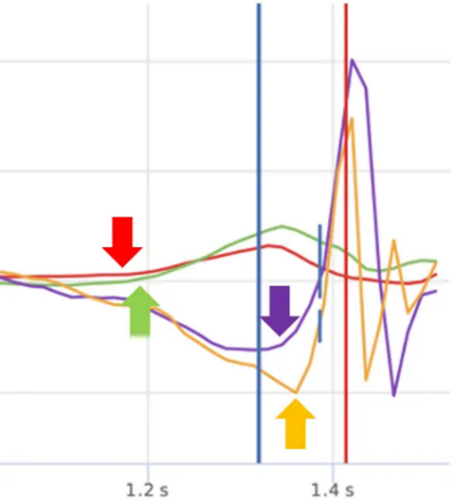
I’ve written many articles on each of these different phases but for today, we’re going to focus on the four main segments mentioned above that appear on a typical Mocap report.
When a pitcher or player’s front foot hits the ground at front foot plant, the upper body- mostly the core, exerts force into lead leg. In turn, the ground exerts force back into the front foot through the point of contact. This is commonly known as ground reaction force (GRF) and is the start of the energy transfer up and through the kinetic chain summarized above. The ultimate production and sequencing of this energy directly correlates to the pitching velocity or bat speed, and thus increasing energy results in an ultimate increase in velo.

How do you evaluate it?
In order to accurately pinpoint proper sequencing, you need some form of high-speed data capture technology. Given the limited availability of this type of tech, every good coach should be able to evaluate the delivery sufficiently only with high-speed video. The big question is how?
While this has been the topic of many 250+ page texts, today, I’m going to briefly list how I look for proper sequencing when looking at raw video only.
Pelvic rotation – We ideally like to see hip rotation happen as late as possible in order to create faster and more forceful ground contact at landing. Efficient rotation should start just before the lead leg begins it’s descent into foot plant. Look for the back leg to snap downward to help cue the beginning of lower half rotation. This will allow the back foot to remain fully on the ground, initiating rotation just before front foot plant.

Torso / Trunk Rotation – Like I said earlier, different size guys will have more or less slack to pull out of the upper half so the amount that is considered optimal varies based on anthropometrics (the size of the player).But a good marker is the upper half looking straight ahead (or slightly behind) and the pelvis approx. half way around at foot plant.
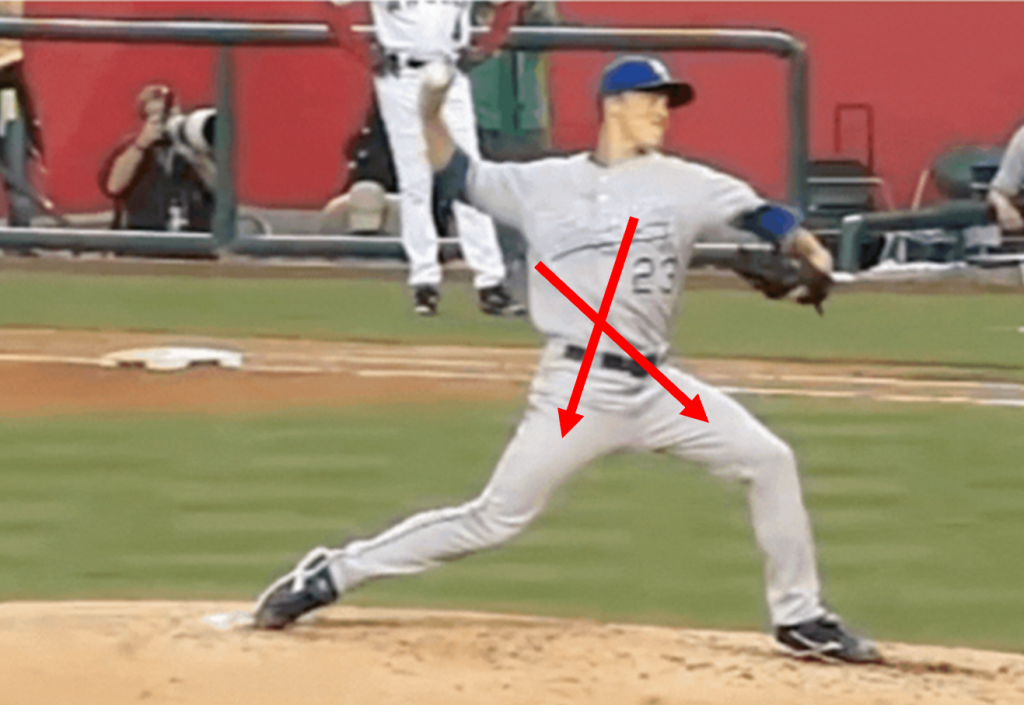
Upper Arm (layback through acceleration) – This is what we call the “acceleration phase” . Look for the elbow to spiral up and back into layback and then outward into the plane of rotation all the way to ball release. This will help alleviate the elbow leading the way through the delivery, creating a “push” and putting additional stress on the elbow.

Hand (pronation) – Look for the throwing shoulder to continue to roll over into internal rotation after ball release. Don’t sleep on the finish. This will ensure that the bicep is effectively turned off, removing stress on the bicep belly, the biceps tendon and the labrum as well as allowing the forearm musculature to turn on and protect the UCL.

What can lead to poor sequencing?
No one capacity exists in isolation. There are a variety of elements that can lead to poor sequencing. For guaranteed progression and transfer of training, they all need to be respected and trained together.
Let’s take a look at what I consider to be 4 of the “Big Players.”
-
- Poor Mobility
- Inadequate strength/core control
- Technical Skills/Timing
- Poor Ecc. Strength/stability (deceleration)
#1. Poor Mobility
While many elite athletes are also elite compensators, they are definitely outliers. Most young pitchers will have a much better chance of getting into and being “coached” into more efficient mechanics if they already possess a good blend of hip, thoracic and shoulder mobility just to name a few. Not just static mobility but active range of motion as well. Hip and shoulder CARS (controlled articular rotations) work great for this application.
Hip or Shoulder Cars
#2. Inadequate strength/core control
Pitching mechanics are really about how you “shift gears” to maximize your top-end speed when you release the ball. But how powerful each gear is will decide how fast we can go in each of those gears in order to unfold the delivery and create a consistent, more powerful throw with a higher velocity ceiling. While there are different types of strength achieved at various loads, max strength is the glass that all other types of strength sit in.
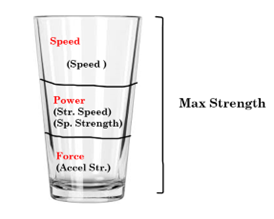
#3. Timing / Technical Skills
Like most athletic actions, it’s not about building robots who perform the same way in a rigid model; it’s about making sure the “attractors”—the key basic, essential, fixed movements—are stable in the technical completion of the action. Let’s look at a few of these movements as it relates to mechanics at “fixed” points in the delivery- from leg lift to release.
Co-contraction of the back hip (stride phase) – There are a lot of ways to throw hard but not a lot of ways to do so SAFELY for a long time, and stability in the back leg is at the center of both. Co-contracting the quad and the glute AT THE SAME TIME creates optimal stability to help begin rotation later in the delivery in order to create a faster later rotation into foot plant. As far as timing goes this for me is # 1 as it affects everything that happens in the rest of the delivery. This is also the easiest to see on video as it is the slowest movement and happens first.
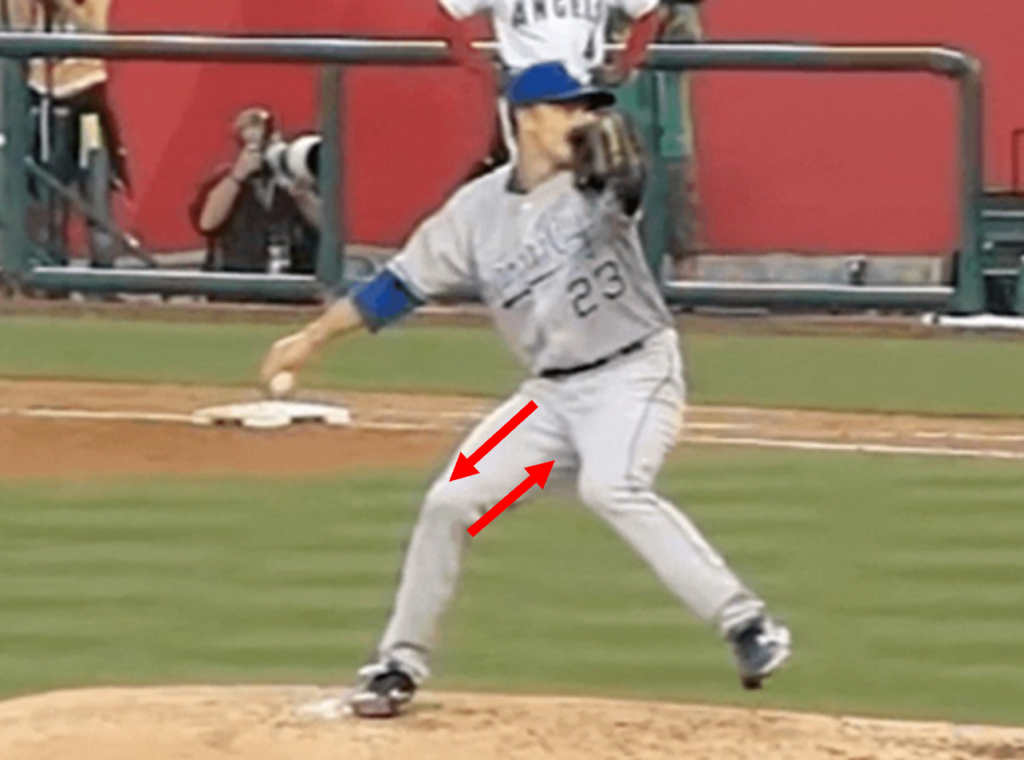
Timing of hip shoulder separation @ weight bearing FP – The period of time that happens between front foot contact and max ER (layback) is when max hip and shoulder separation generally occurs. The amount, however, will depend on each player’s mobility. This is all about stretching and removing slack from the trunk and then “closing the gap” to help create better trunk rotation velocity. For me, it’s not just about how much we get it’s also a matter of “when” it happens. We generally like to see hip / shoulder separation max out around front foot plant before it begins to unwind.
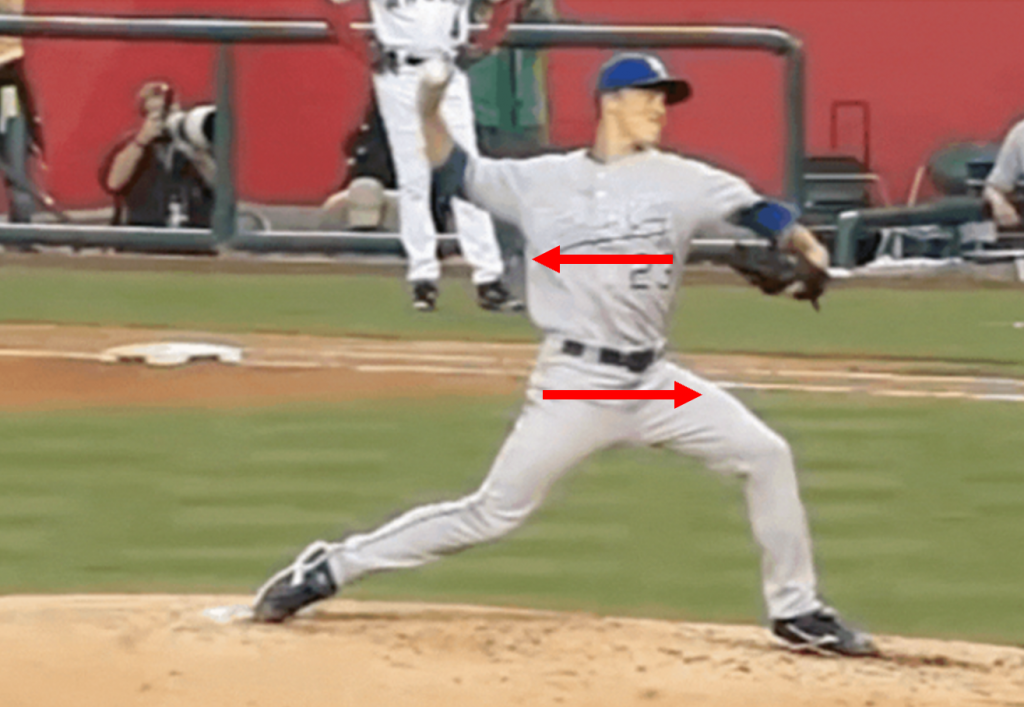
Co-contraction of the front hip / knee @ weight bearing FP – This simultaneous co-contraction of the lead leg glute and quad gives the athlete the ability to “hit the brakes” during a lead leg block. This generally happens in less than 250 milliseconds but, if it takes too long to contract and load the lead leg, this small window of opportunity will be missed to produce force at a faster rate, negatively affecting sequencing while sacrificing force being transferred up the chain and ultimately into the ball.
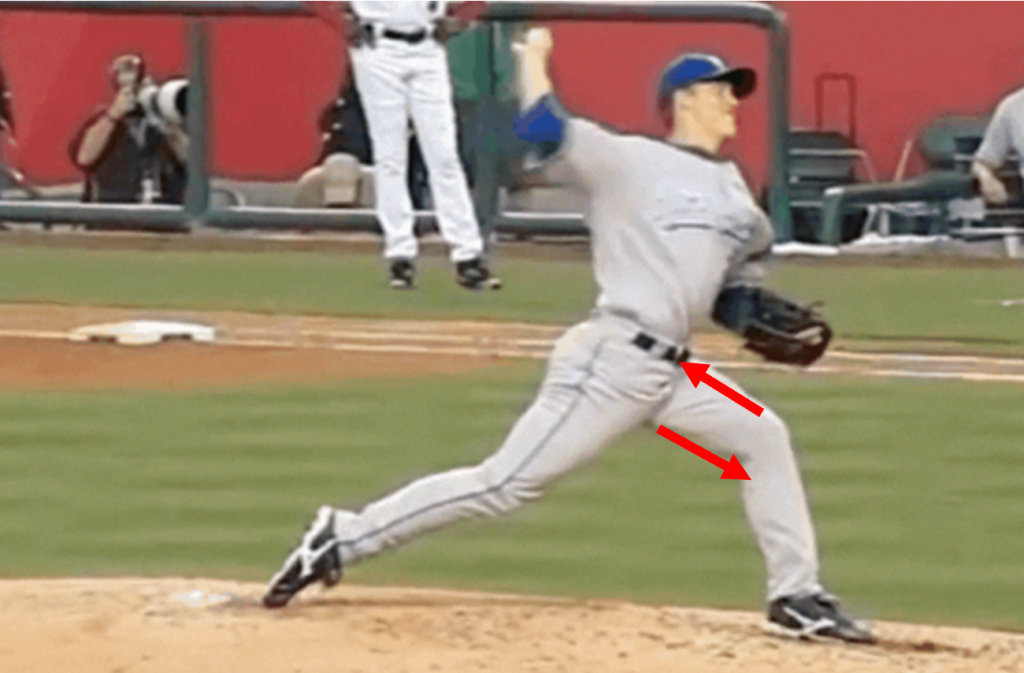
Timing of Elbow flexion @ weight bearing FP – We generally look for 75-90 degrees @ foot plant. This allows for a better co-contraction (there’s that word again!!) of the anterior (front) cuff and scap (back), allowing a better kick into lay back and then acceleration once lead leg deceleration starts. This is also a big player in upping arm speed safely due to keeping the arm out of more provocative positions (<75% and/or >90%) at weight bearing foot plant.
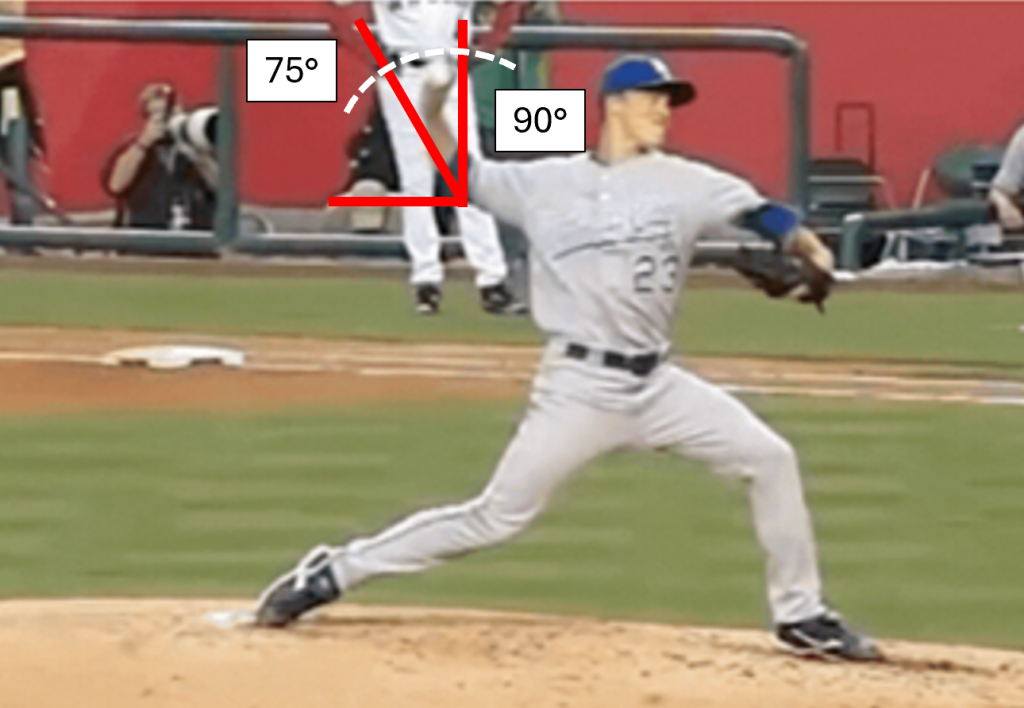
#4. Poor Eccentric strength/stability (Deceleration)
This is the ability for the athlete to “hit the brakes”. If it takes too long (> 200 ms) to load your muscles, you will miss this small window to create greater torque and produce force at a faster rate.

As far as front foot landing goes, each athlete should consider different styles based off of lower half strength. Stronger athletes can try landing with more of a “flat foot” while taller/weaker athletes may have an easier time absorbing ground reaction force by landing with more of a “heel -first” landing.
Summary
Sequencing is all about creating stiffness and tension in specific parts of the body at specific times (timing), to help give an athlete the ability to transfer force more efficiently through the body and into the ball / bat.
And when it comes to throwing velocity or bat speed, it is about as important as anything else on your list. It’s also important to note that while everyone starts with a different kinesthetic / movement point genetically, with a better understanding of sequencing and timing in the delivery, an athlete can continue to maximize gains until they reach their genetic potential.
By Nunzio Signore
You live too far to train with us in-house at RPP? You can now train with us on a REMOTE basis.


